Typography Automation 2
26 April 2017
IGP:Digital Publisher has the most exciting new feature ever released in digital production. Typography Automation. We continue the Automation adventure.
The exciting story of Typography Automation continues...
Unfortunately, Artificial Intelligence (AI) software doesn't have a "Meh! Whatever!" mode like human intelligence. That means the "artificial" half of the phrase has to be worked on with a lot of RI (Real Intelligence).
Most turn rules in typography are reasonably rules based and straight-forward:
- Line turns - easy with just hyphen decisions.
- Paragraph turns - how many letter allowed on the last line. Got it.
- Section turns - we need this many lines minimum on a chapter last page. OK. Whatever.
Then the monster stomps into the AI. EVIL PAGE TURNS. We handled the Widows and orphans aspect of this in our Typography Automation Announcement article. A little complicated but... OK.
But page turns get bigger and uglier with "nothing content". The deadly....
- BLANK LINE and
- It's cousin the DECORATION LINE with blank line margin above and below.
- While all thought is subsumed and controlled by the holy and enigmatic PAGE BASELINE. (Gotta have the page baseline or two pages side-by-side look like a corporate presentation.... yuck!)
Looking at the MOD51 Automation page-turn mechanics...
on invisible content.
This is how IGP:Digital Publisher MOD51 Automation ponders and solves the blank line challenge.
Paragraph Shortening opportunity implementation
In the example below page 30 has a baseline error at the foot of the page. The "setting rules" as applied are orphans=1 and widows=2. It means the top of page 31 must have two lines. That's the rule! But to force that rule means there is a blank line at the bottom of page 30. That breaks the baseline rule. (Sigh!)
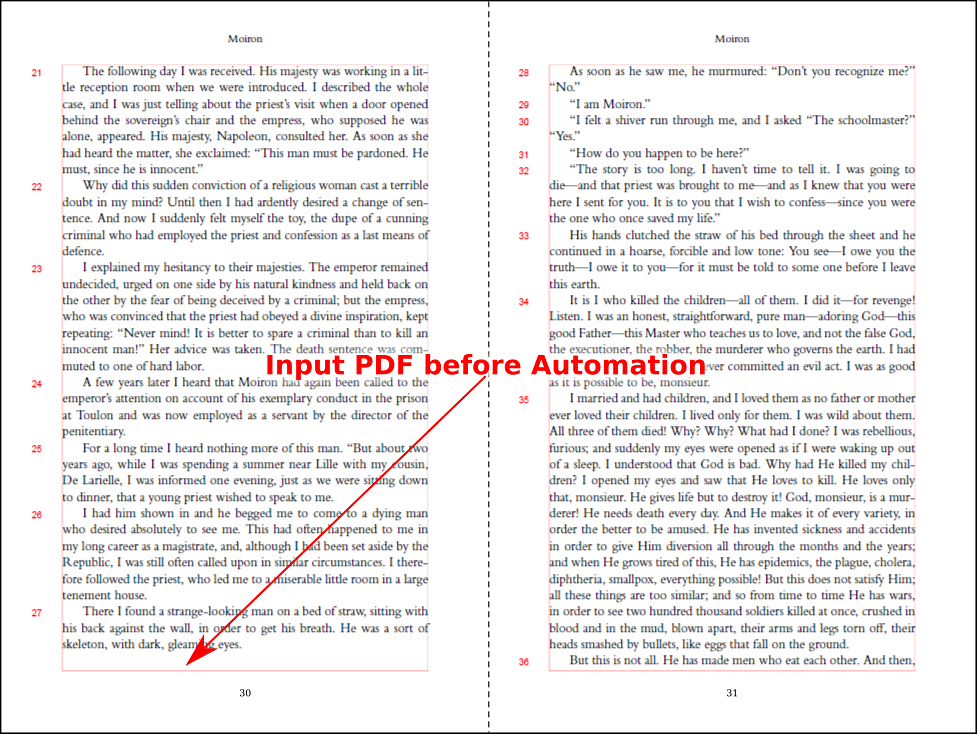
After running Infogrid Pacific's MOD51 Automation it fixes the base-line error based on the typesetting "rules" by shortening or lengthening a prior paragraph (In this example: paragraph number 22) according to the flow requirement.
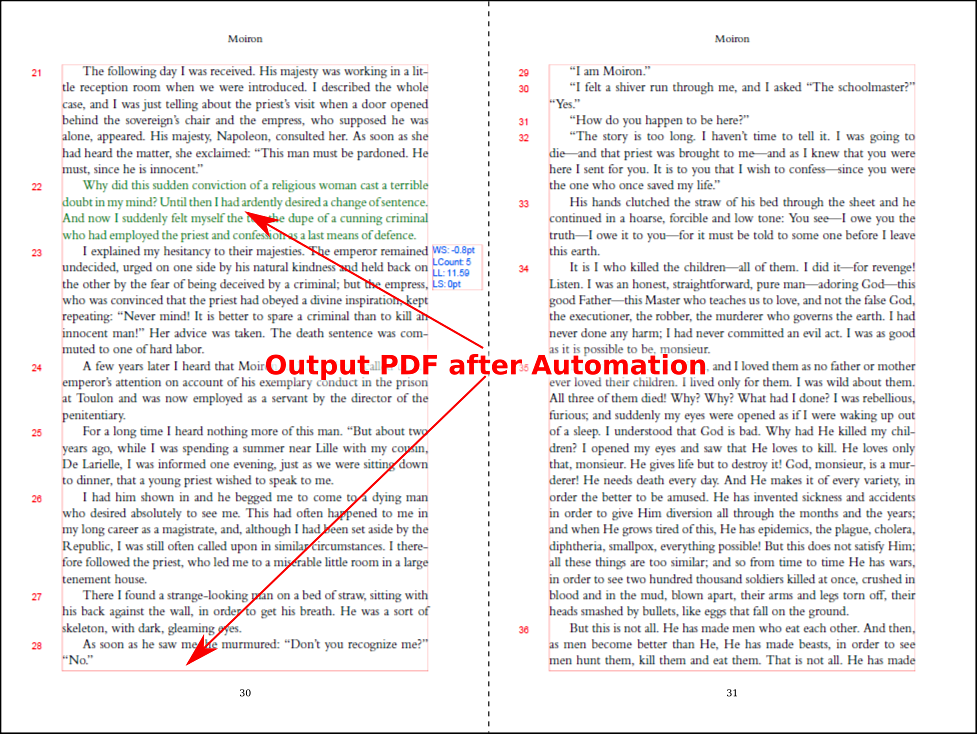
After reducing a line on paragraph 22 this particular page baseline error is fixed automatically. Before the magic of MOD51 Typography Automation a human editor would have to go into the section and do a fix manually before publishing.
Blank Lines
Block-Blank Line(Leading Line) implementation
The following image shows that the default typesetting output delivers a blankline at the bottom of the page on page 2. This needs to be sorted out as it disobeys page turn rules.
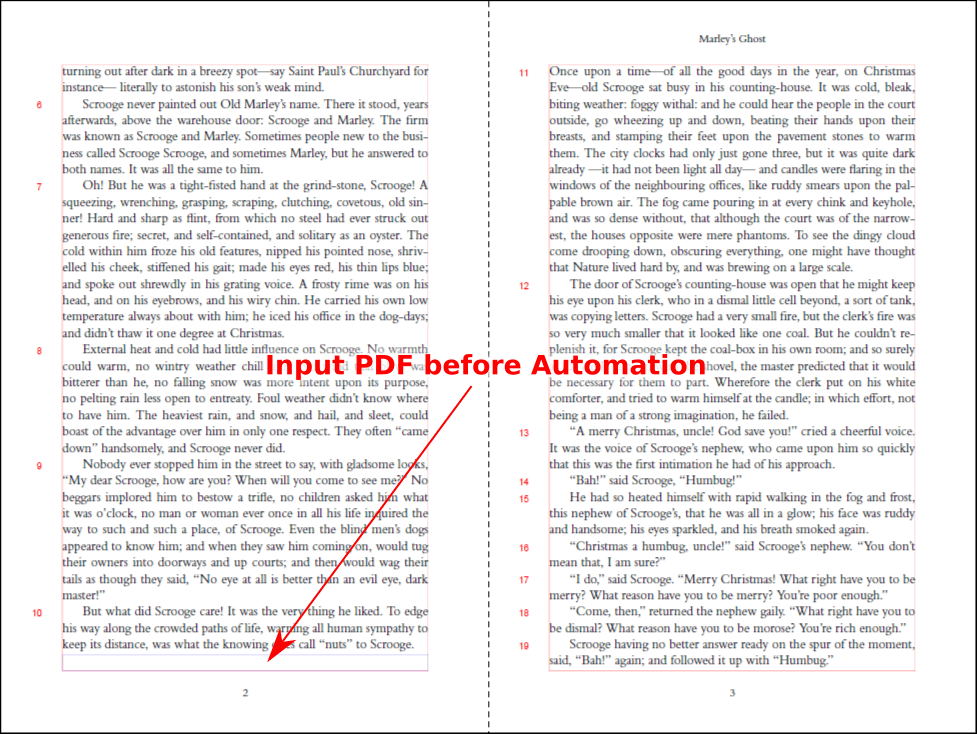
MOD51 Automation runs and the blankline gets removed in fact, but is there virtually and the no-indent on the following paragraph is retained. You can see this nice MOD51 Automation trick in the following picture.
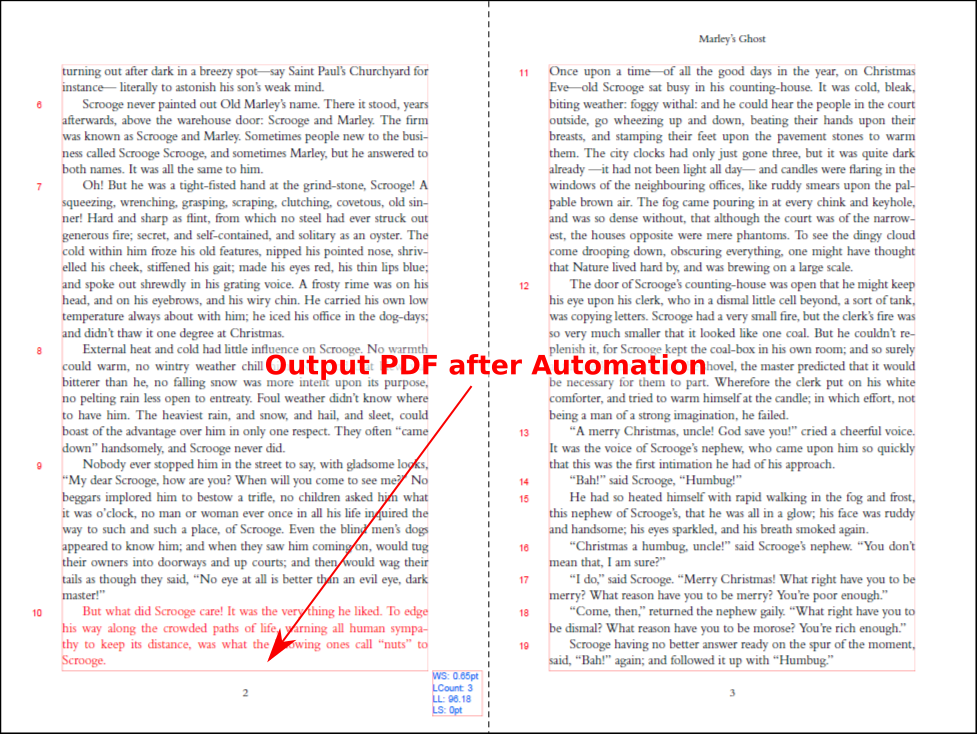
Block-Decoration implementation
The next challenge is the Block-Decoration that happens on the page turn.
The fnext picture shows that a Decoration block ends up leaving a empty line space at the bottom, breaking the baseline rule.
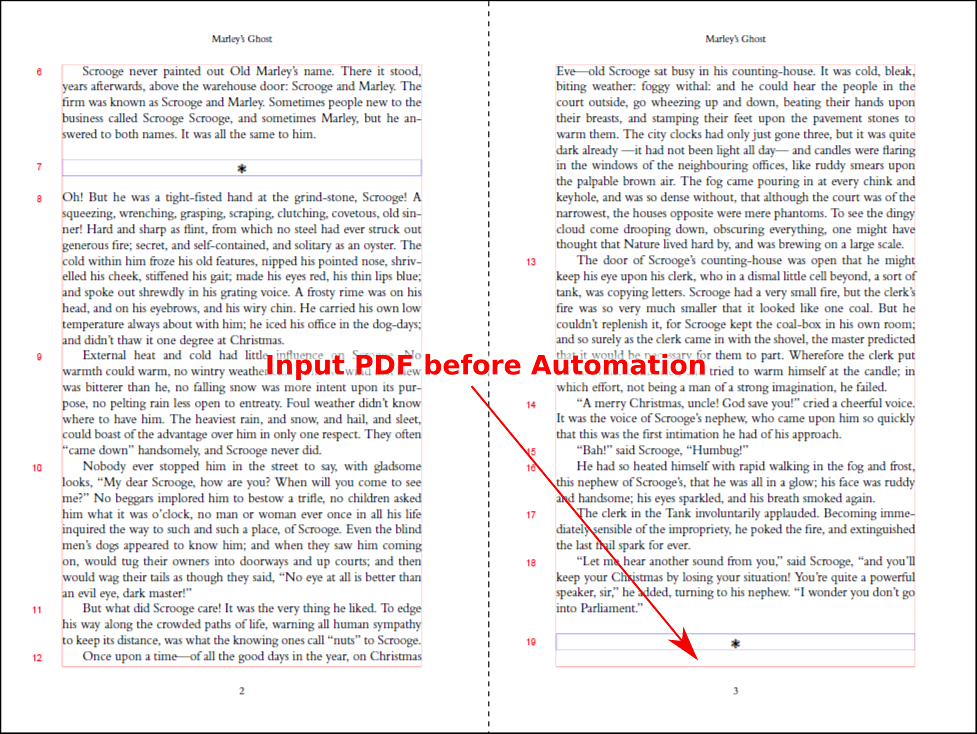
MOD51 Automation explores the previous paragraphs and finds a fix by lengthening a line on paragraph 13. It works out this is the best paragraph to lengthen compared to compared to other paragraphs on the page.
Now the decoration paragraph has been pushed down a line and the empty line at the bottom of the Decoration line has been excluded. Mission accomplished.
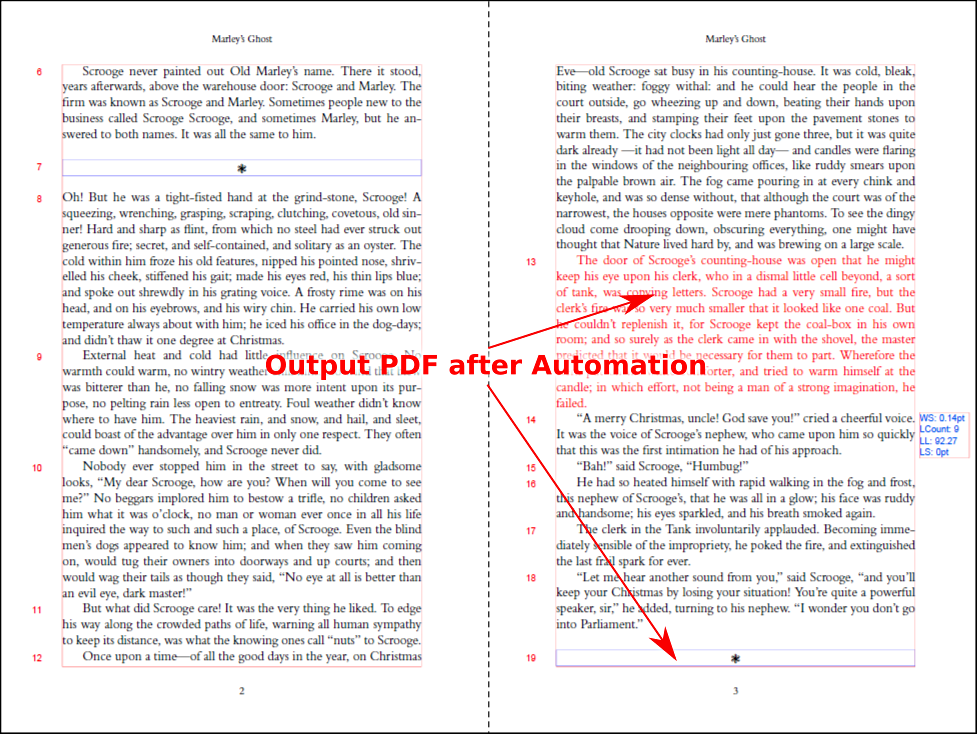
Summary
MOD51 Typography Automation is Artificial Intelligence in that it encapsulates dozens of human conditional rules to imitate human typography correction decisions on a typeset PDF. Remember it is a multi-step process:
- The PDF is generated from the standard typesetting software. In IGP:Digital Publisher that is PrinceXML.
- MOD51 Analysis checks the PDF and finds all rule-breaking typography errors.
- MOD51 Automation uses the Analysis error set and plods through the document making the corrections, in the manner illustrated above.
Currently MOD51 Automation appies primarily to trade novels and books with relatively simple layouts. This is now a standard feature in IGP:Digital Publisher. We continue to move forward to Typography Automation Heaven!
Posted by Bayanna Getteboina & Vivek Sable